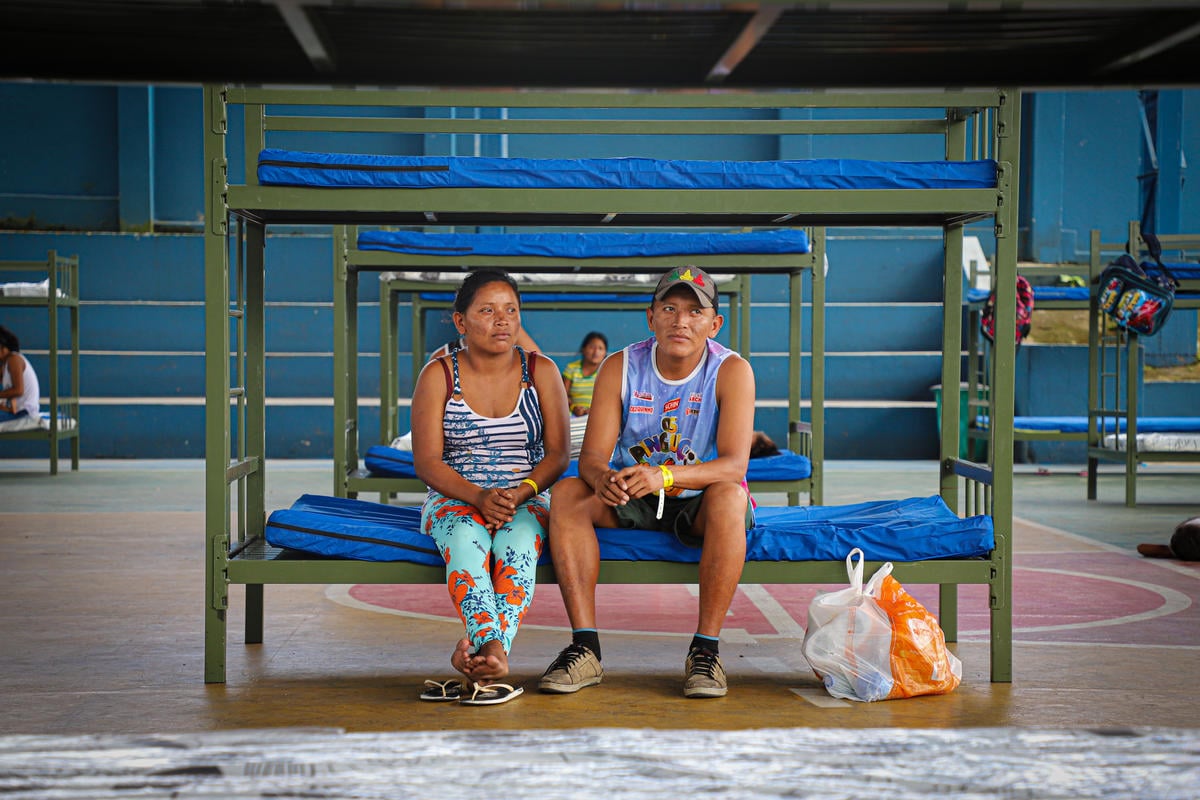Colombia's indigenous people find little to celebrate on key day
Colombia's indigenous people find little to celebrate on key day

COLOMBIA, 9 August (UNHCR) - Rising 6,000 feet above sea-level, the peaks of the Sierra Nevada tower above Colombia's Caribbean Coast in the north of the country. The Kogi Indians are the guardians of the mountain, which they believe to be a magical place, the Heart of the World, linked by invisible black lines to other sacred sites in Colombia.
The Kogis call themselves the Elder Brothers of Humanity and until recently had avoided all contact with the outside world. The lower slopes of the Sierra Nevada are populated by three other groups, the Arhuaco, the Wiwa and the Kankuamo, whose role it is to protect the Guardians at the top.
But in the past decade, Colombia's armed conflict has erupted into their sacred world, with irregular armed groups fighting for territory, selective killings, threats and violence. Today, as the Kogis watch from their snow-capped mountaintop, the black lines have turned into a trail of blood for many of their indigenous brothers.
"As we prepare to mark World Indigenous Day, our people continue to live in the midst of violence, general impunity and lack of state protection," said Luis Evelis Andrade Casama, President of Colombia's National Indigenous Organisation (ONIC) during a news conference in Bogota on Wednesday.
According to ONIC, some 17,000 indigenous people suffered from direct human rights - or International Humanitarian Law - violations in the first seven months of this year. This represents an average of 80 people a day, who have been victims of crimes ranging from forced displacement to targeted killings or threats against their lives.
ONIC added that some 12% of the total indigenous population is currently at risk because of the conflict, suffering from violence, intimidation, and reduced access to economic resources. As a result, the malnutrition rate among children of the Embera and Wounaan groups is as high as 75% in the Pacific Coast region of Chocó.
On the other side of the country, in southern Putumayo, the Cofán Indians are also facing starvation, as the conflict impedes their freedom of movement and limits their possibilities to fish, hunt and grow their traditional crops.
"We are not so many, there are only about 1,200 of us Cofáns," Ivan Queta explained for the group. "We are trying to hang onto our culture, to teach our children to speak our language. But how can our children go to school, when they are dying of starvation and we have to move from one place to the next in search of peace?"
Under Colombian and international law, the State has a duty to pay special attention to the protection of ethnic minorities and their culture in the midst of the armed conflict. Forced displacement affects indigenous people in a devastating way, not only as individual but as cultural groups with their own traditions and organizations.
UNHCR works with the State to help it fulfil this duty of protection, and with indigenous organizations all over the country. It has also been campaigning to raise awareness of the magnitude of a crisis that goes on year after year.
"We have to ask ourselves what we are doing to overcome this situation," said UNHCR Representative in Colombia Roberto Meier during the news conference. "Last year, we denounced the killings of five displaced Awá indigenous people on World Indigenous Day. A year on, we have the sad news that five Awá have died in a landmine accident on their own lands."
He added that some 1,300 Awá are confined in their territories in Nariño, also in southern Colombia, unable to flee combat because their lands are ridden with mines. Some 600 of them have taken refuge in five schools inside Awá territory. Hundreds more have been forced to displace again this year, some across the border to Ecuador.
Other indigenous people have fled to Brazil, Venezuela and Panama in search of safety. In order to address the regional dimensions of the crisis, UNHCR is developing a joint strategy based on local resources and needs on both sides of Colombia's borders, starting with Ecuador and Venezuela.
Speaking on behalf of the four tribes of the Sierra Nevada, Leonor Zabaleta, who received a Human Rights Prize this year from the Swedish government, said all the laws and humanitarian assistance in the world cannot alone stop the tragedy. "There is a law in Colombia to help the victims of forced displacement, but there is nothing concrete in place to guarantee that we do not have to displace. Yet if we have to leave our land, everything is lost," she said.
And while Colombia's armed conflict goes on, fear will remain for the cultural survival of the 80 indigenous groups who together make up around 3% of the country's total population and represent one of the richest and most varied indigenous heritage in the world.
By Marie-Hélène Verney and Gustavo Valdivieso in Bogota, Colombia







